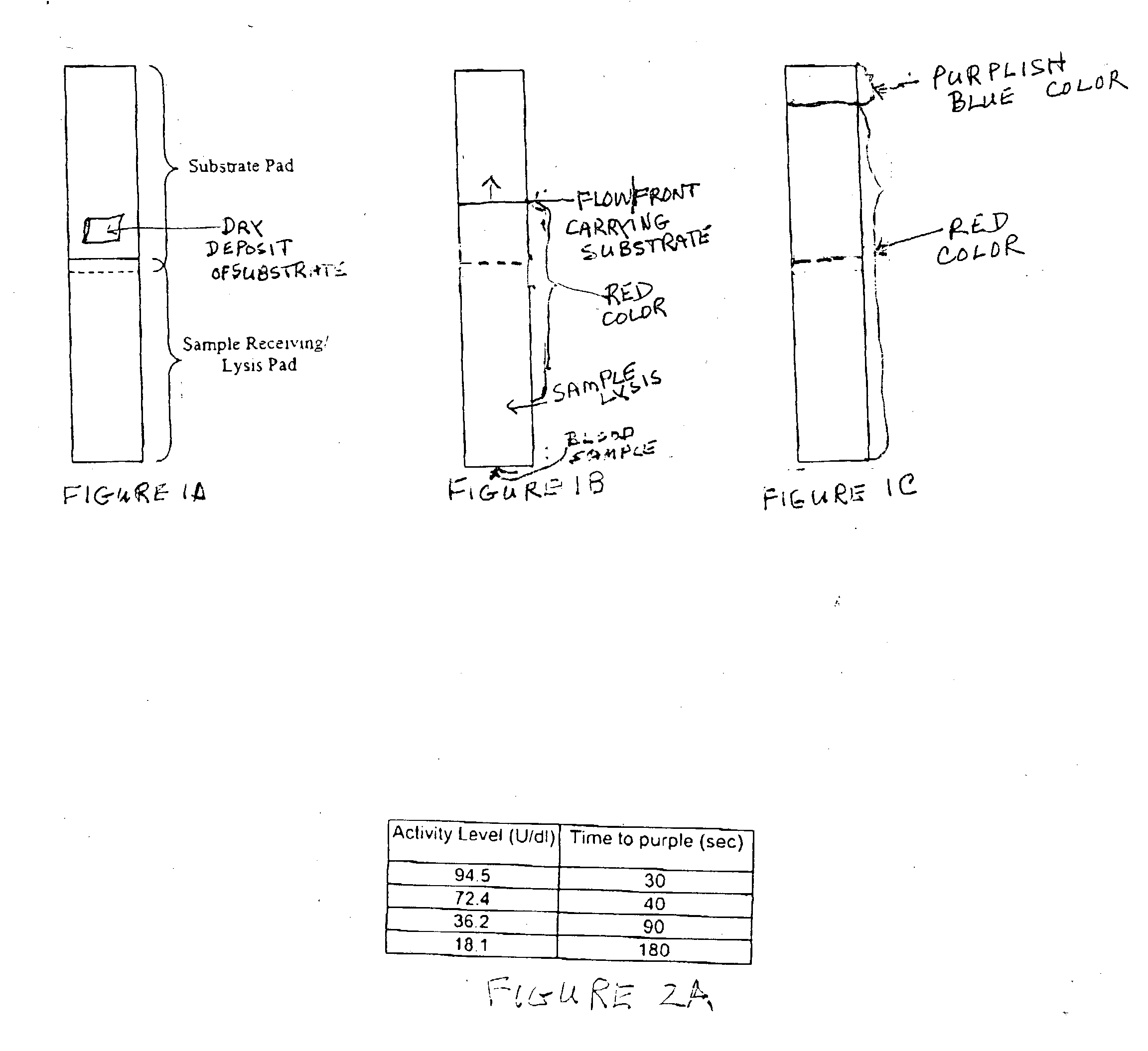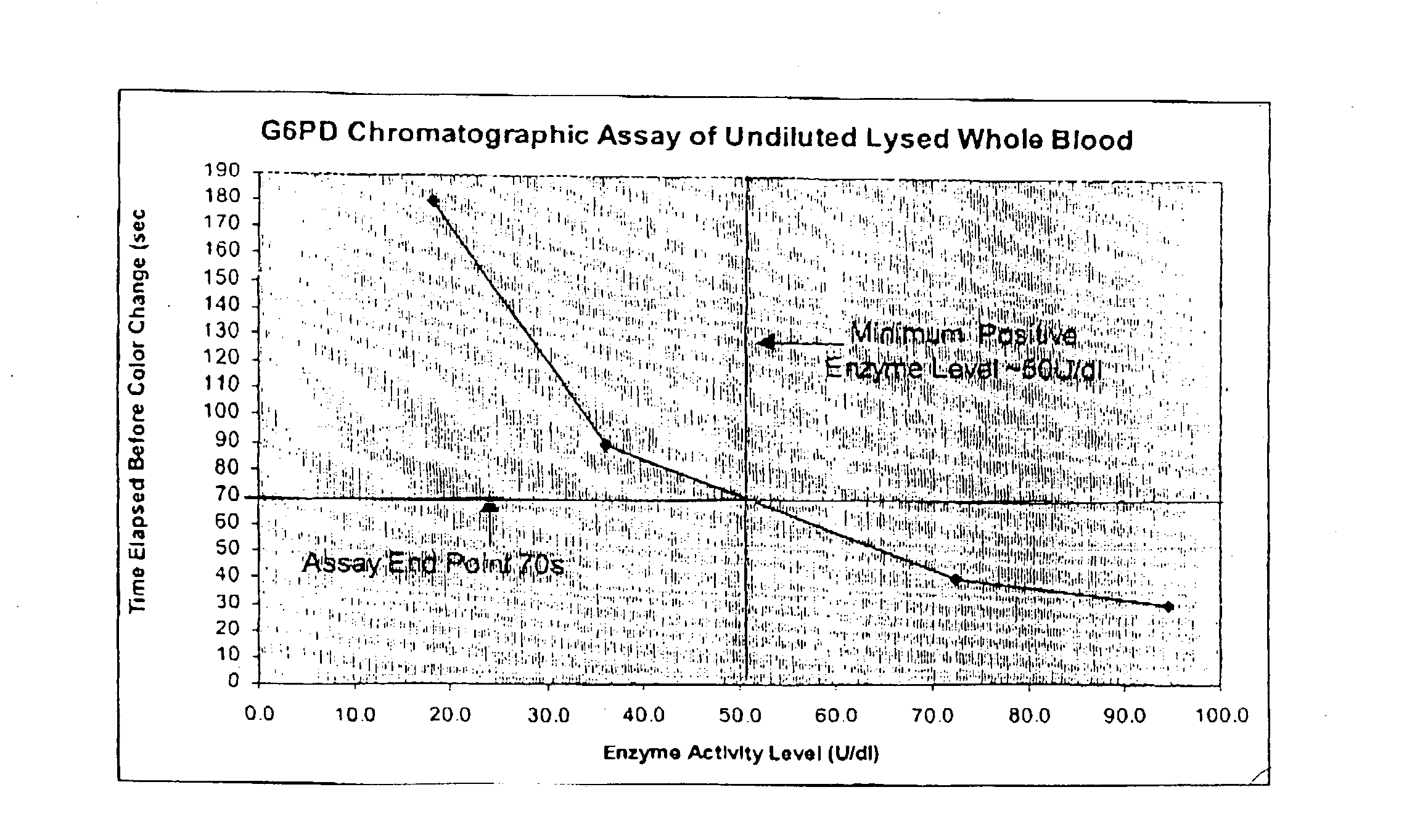Dry chemistry, lateral flow-reconstituted chromatographic enzyme-driven assays
a technology of chromatographic enzymes and enzymes, applied in the field of dry chemistry and lateral flowreconstituted chromatographic enzyme-driven assays, can solve the problems of reducing the efficiency of enzymes in biochemistry, ineffective in normal human biochemistry, and especially susceptible to oxidative attack
- Summary
- Abstract
- Description
- Claims
- Application Information
AI Technical Summary
Problems solved by technology
Method used
Image
Examples
Embodiment Construction
[0053] This test is performed on a lateral flow strip as pictured in FIG. 1A, having a `lyse" or, wicking, pad from which the sample flows forward into the second, or substrate pad. The latter pad has two regions. The first such region is a tightly confined substrate zone in which is movably pre-deposited all of the dried components that may be conventionally used in the art to enable G6PD in the sample to reduce the faint yellow dye nitroblue tetrazolium, to dark blue formazan. The rate of conversion of nitroblue tetrazolium to dark blue formazan is one of several "wet chemistry" tests that has been used in the art to measure G6PD specific activity. The substrate pad also contains what is initially a substrate-free zone, positioned at the farthest end of the strip from the sample introduction point. As the sample picks up substrate and flows forward the initially substrate-free zone becomes the "read" or endpoint zone when the sample containing reconstituted substrate occupies it a...
PUM
| Property | Measurement | Unit |
|---|---|---|
| temperature | aaaaa | aaaaa |
| temperatures | aaaaa | aaaaa |
| temperature | aaaaa | aaaaa |
Abstract
Description
Claims
Application Information
 Login to View More
Login to View More - R&D
- Intellectual Property
- Life Sciences
- Materials
- Tech Scout
- Unparalleled Data Quality
- Higher Quality Content
- 60% Fewer Hallucinations
Browse by: Latest US Patents, China's latest patents, Technical Efficacy Thesaurus, Application Domain, Technology Topic, Popular Technical Reports.
© 2025 PatSnap. All rights reserved.Legal|Privacy policy|Modern Slavery Act Transparency Statement|Sitemap|About US| Contact US: help@patsnap.com


